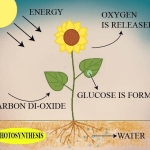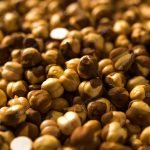Contents
Introduction
Fungi are a diverse group of organisms that play critical roles in various ecosystems. They are critical decomposers of organic matter, mutualistic partners with plants, and pathogens of animals and plants. One of the most fundamental characteristics of fungi is the way they obtain their nutrients, which is crucial for understanding their biology and ecology.
The Three Modes of Nutrition in Fungi
Fungi can obtain nutrients in three ways: saprophytic, parasitic, and symbiotic. In saprophytic nutrition, fungi obtain nutrients by decomposing dead organic matter. In parasitic nutrition, fungi obtain nutrients by feeding on living organisms. In symbiotic nutrition, fungi form mutualistic relationships with other organisms to obtain nutrients.
Dominant Mode of Nutrition: Saprophytic
The dominant mode of nutrition in fungi is saprophytic, which involves the decomposition of dead organic matter to obtain nutrients. This mode of nutrition is crucial in the recycling of nutrients in ecosystems and helps to maintain the balance of carbon, nitrogen, and other elements. Saprophytic fungi are found in a wide range of environments, including soil, water, and dead wood.
Advantages of Saprophytic Nutrition
Saprophytic nutrition has several advantages for fungi. Firstly, dead organic matter is a readily available and abundant source of nutrients. Secondly, saprophytic fungi can grow rapidly and occupy large areas, which allows them to decompose a significant amount of organic matter. Finally, saprophytic fungi play a critical role in breaking down complex organic compounds into simpler compounds that can be used by other organisms.
Conclusion
In conclusion, the dominant mode of nutrition in fungi is saprophytic, which involves the decomposition of dead organic matter to obtain nutrients. This mode of nutrition is crucial for the functioning of ecosystems and is essential for maintaining the balance of nutrients. Understanding the way fungi obtain their nutrients is important for understanding their biology, ecology, and potential uses in various fields.




